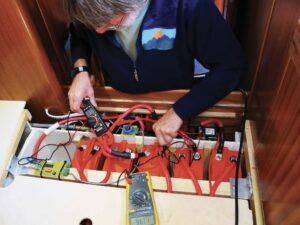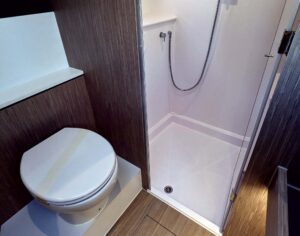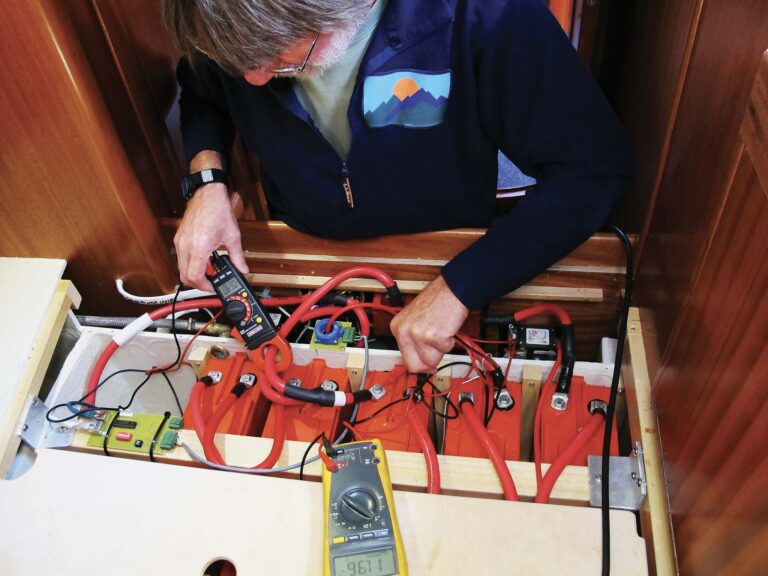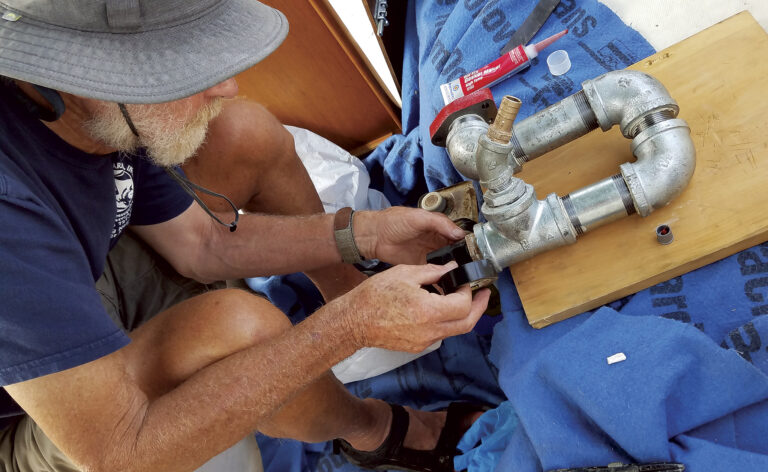Finding a big leak is relatively easy, but a small one can be a major challenge because a boat’s interior is a bit like a room in a funhouse, where water flow often seems to defy gravity. A trickle in the cabin, for example, may be coming from a leak in the deck half a boat length away. Conventional search techniques include 1) flooding the deck by sections with a hose, and 2) building a dike of modeling clay around a suspect fitting, then filling the crater with water. In my experience neither method is good for locating a really hard-to-find leak.
To find a leak in a bicycle tire’s inner tube, you first wet the tube with soapy water and then look for air bubbles. This same technique can work on your boat, once you have inflated it. You’ll need a plastic grocery bag and perhaps some plastic sheeting, a roll of 2in-wide masking tape and any size shop vacuum with an exhaust port (I have a small one that cost me just $25).
First, seal every spot through which pressurized air might escape from the cabin. Secure and dog tightly all ports and hatches, and close all seacocks. Carefully seal all hatches, deck openings, cowl ventilators and cockpit locker lids with masking tape. Use a leaf bag or plastic sheeting to cover hawse pipes, blower and intake gratings, and companionways. When you have finished, you want just two openings into the cabin: one to receive the shop vac hose discharging air into the cabin, and a second to hold a plastic bag that will tell you when the cabin is pressurized. On my boat, I use two ventilator sockets on my cabintop, but you can use whatever works best on your boat. I put the vacuum hose into one socket opening, seal it with masking tape, and then put the other end of the hose into the vac’s discharge port. I tape the open mouth of a plastic bag over the second socket and seal the bag tightly to the deck.
When you turn on the vac, the plastic bag should inflate almost immediately. If it doesn’t, there are still some cabin openings that aren’t properly sealed. Once the vac is running and the bag firmly inflated, take a bucket of dish detergent and water and a sponge and methodically work your way from one end of the deck to the other. Slather the sudsy water over every seam, joint, light, fitting and fastener. If there is any breach, air will leak out and appear in the soapy water either as a stream of bubbles or a single big bubble. A small leak can be very subtle, however, so be sure to work slowly.
This method has worked for me 99 percent of the time. The only leaks this pressure test might not detect are those that are only active when the boat is under sail with the hull and rig under load. In almost every other situation, using soapy water and air pressure will locate those hard-to-find leaks you might otherwise miss.









